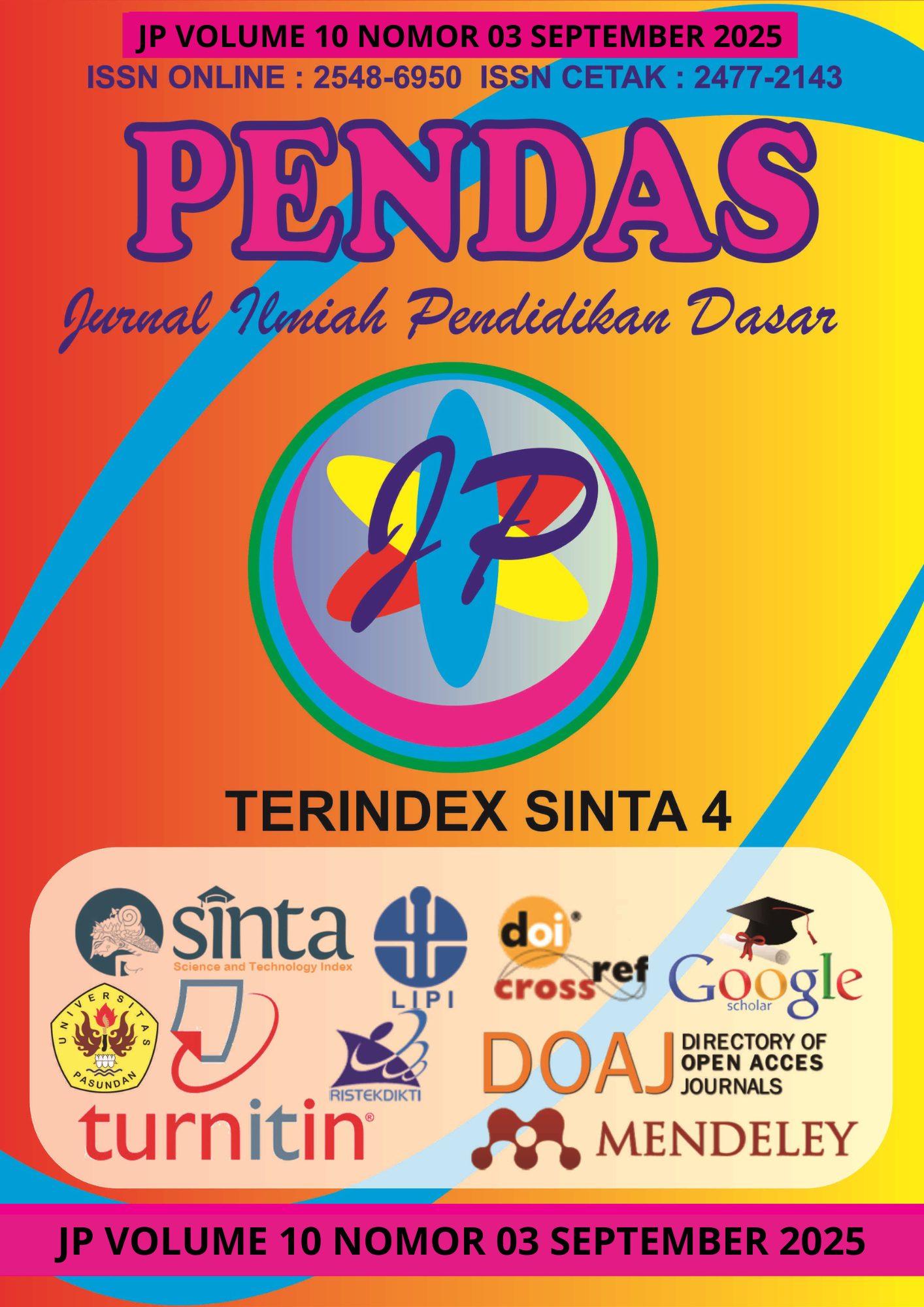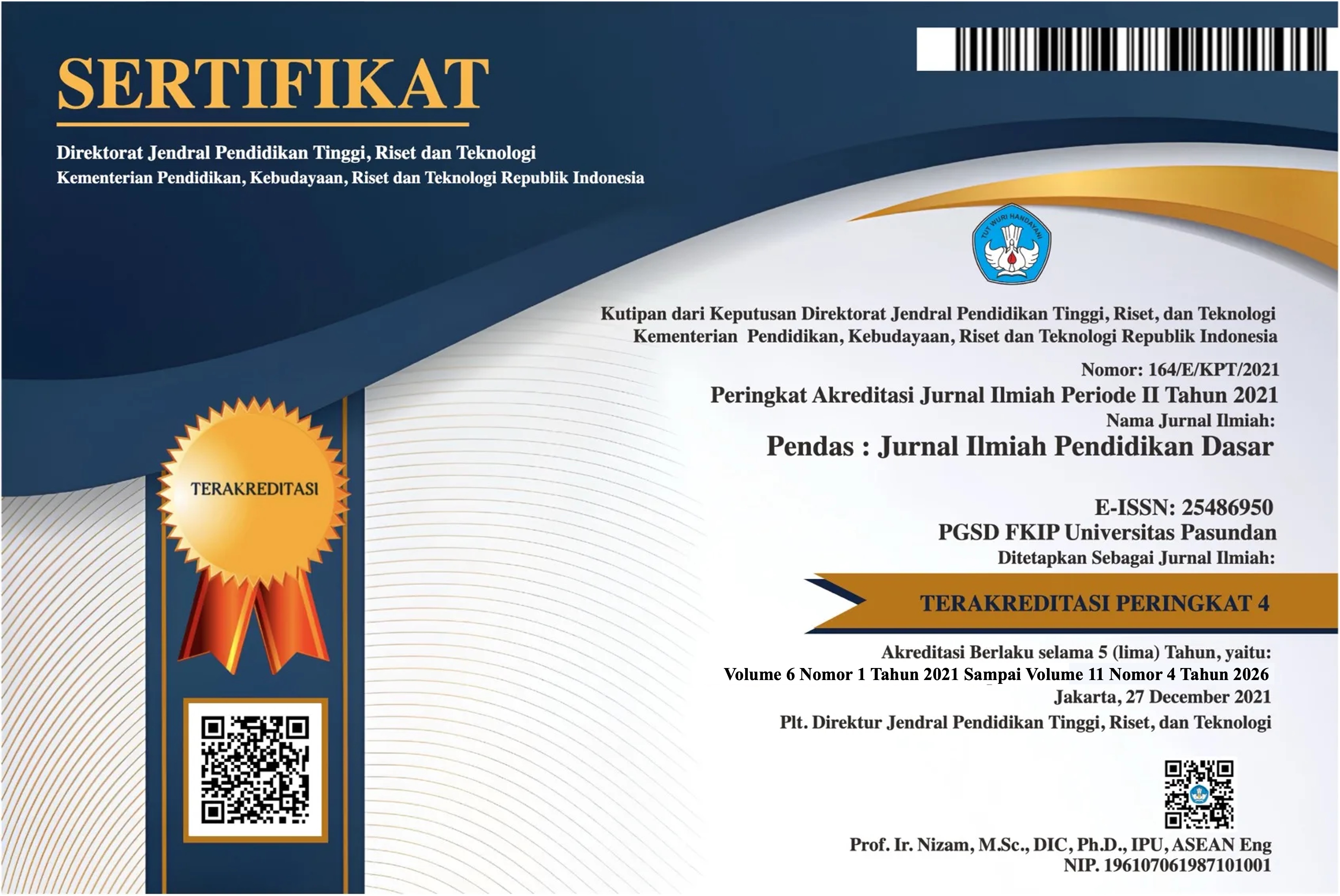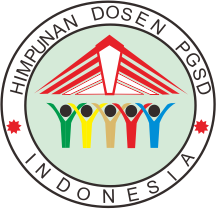PENGARUH PENGGUNAAN MEDIA FERROFLUID DALAM PEMBELAJARAN MAGNET DAN MEDAN MAGNET TERHADAP PEMAHAMAN SISWA KELAS V
DOI:
https://doi.org/10.23969/jp.v10i3.30550Keywords:
ferrofluid, magnet, magnetic field, experimental media, conceptual understandingAbstract
This study aims to examine the effect of using Ferrofluid media on the understanding of the concept of magnets and magnetic fields of fifth grade elementary school students. The background of this study is based on the low understanding of students towards abstract science material and the lack of use of innovative experimental media such as Ferrofluid in learning. This study uses a quantitative approach with a quasi-experimental design of the pretest and posttest control group design type. The subjects of this study consisted of 76 students of SDN 1 Dampit who were divided into experimental and control classes. The instrument was in the form of multiple-choice questions that were tested for validity and reliability. The data analysis technique in this study used prerequisite tests (normality and homogeneity tests) and hypothesis tests using independent sample t-tests. The results of this study showed that there was a significant difference between the posttest results of the experimental and control classes. The conclusion of this study is that the use of ferrofluid as an experimental medium has a positive impact on improving students' understanding of the concept of magnets and magnetic fields. The implication of this study is the importance of using experimental media based on concrete visualization in science learning in elementary schools.
Downloads
References
Adi, T. and Darsono (2017) ‘the Effect of Experimental Methods on Science Learning Outcomes’, Lampung University Journal, 11(01), pp. 69–76.
Afifah, D. Y. (2018) ‘Ir - perpustakaan universitas airlangga’.
Arifianto, A. S. (2018) ‘Skripsi aplikasi fiber bundel... akbar setya a..’
Ayu Respati, Y. et al. (2023) ‘Do Internal and External Factors Matter for Students’ English Skills: The Moderating Role of Teaching Style’, Journal of Management Scholarship, 2(1), pp. 217–222. doi: 10.38198/jms/2.1.2023.3.
Berger, P. et al. (1999) ‘Preparation and Properties of an Aqueous Ferrofluid’, Journal of Chemical Education, 76(7), pp. 943–948. doi: 10.1021/ed076p943.
Caroaie, O. V. and Caltun, O. F. (2019a) ‘Ferrofluids in secondary schools through an interactive stand’, Journal of Physics: Conference Series, 1286(1), pp. 0–6. doi: 10.1088/1742-6596/1286/1/012066.
Caroaie, O. V. and Caltun, O. F. (2019b) ‘Ferrofluids in secondary schools through an interactive stand’, Journal of Physics: Conference Series, 1286(1). doi: 10.1088/1742-6596/1286/1/012066.
Ega, B. D. and Hendrasarie, N. (2023) ‘Efektivitas Ferrofluid dalam Penurunan Parameter Limbah Laundri’, Jurnal Serambi Engineering, 8(4), pp. 6873–6880. doi: 10.32672/jse.v8i4.6614.
Eti, S. (2015) ‘Nonequivalent Pretest Posttest Control Group Design .’, Jurnal Penelitian Ilmu Pendidikan, 8, pp. 54–67.
Fang, W. Z. et al. (2020) ‘Freezing process of ferrofluid droplets: Numerical and scaling analyses’, Physical Review Fluids, 5(5), p. 53601. doi: 10.1103/PhysRevFluids.5.053601.
Al Fatah, R. A. and Selviari (2024) ‘Meningkatkan Hasil Belajar Siswa Kelas IV Melalui Metode Eksperimen pada Materi Gaya Magnet’, 1(1), pp. 203–210.
Guilherme, A. L. et al. (2023) ‘Ferrofluid droplets in planar extensional flows: Droplet shape and magnetization reveal novel rheological signatures of ferrofluid emulsions’, Physical Review Fluids, 8(6), pp. 1–29. doi: 10.1103/PhysRevFluids.8.063601.
Hadiyati, N. and Wijayanti, A. (2017) ‘Keefektifan Metode Eksperimen Berbantu Media Benda Konkret Terhadap Hasil Belajar Ipa Siswa Kelas V Sekolah Dasar’, JIPVA (Jurnal Pendidikan IPA Veteran), 1(1), p. 24. doi: 10.31331/jipva.v1i1.513.
Handayani, F. L. et al. (2023) ‘Analisis Penggunaan Teknologi pada Pembelajaran IPA di Sekolah Dasar’, Jurnal Teknologi Pendidikan, 1(2), p. 7. doi: 10.47134/jtp.v1i2.105.
Harsiwi, U. B. and Arini, L. D. D. (2020) ‘Pengaruh Pembelajaran Menggunakan Media Pembelajaran Interaktif terhadap Hasil Belajar siswa di Sekolah Dasar’, Jurnal Basicedu, 4(4), pp. 1104–1113. doi: 10.31004/basicedu.v4i4.505.
Irjan (2012) ‘Optimalisasi Proses Dan Hasil Pembelajaran Ilmu Pengetahuan Alam (Ipa) Pada Sekolah Dasar (Sd) / Madrasah Ibtidaiyah (Mi)’, Madrasah, 1(1). doi: 10.18860/jt.v1i1.1853.
Kusmawati, L. and Ginanjar S, G. (2016) ‘Peningkatan Kemampuan Pemahaman Konsep Perkalian Melalui Pendekatan Pembelajaran Konstruktivisme Pembelajaran Matematika Di Kelas 3 Sdn Cibaduyut 4’, Didaktik : Jurnal Ilmiah PGSD STKIP Subang, 1(2), pp. 262–271. doi: 10.36989/didaktik.v1i2.32.
Megawati, I. N. (2014) ‘Penerapan Model Pembelajaran Berbasis Proyek Untuk Meningkatkan Eksposisi’, 2(10).
MSi, H. (2021) ‘Pemanfatan Sensor Android Sebagai Media Eksperimen Pada Materi Gerak Harmonis Sederhana’, Jurnal Teknodik, 25(2), p. 131. doi: 10.32550/teknodik.v25i2.666.
Mukhtar, A. and Rubiono, G. (2023) ‘Investigasi Ferrofluid Dengan Bahan Besi dan Nikel Menggunakan Software Image J’, V-MAC (Virtual of Mechanical Engineering Article), 8(2), pp. 33–36. doi: 10.36526/v-mac.v8i2.3028.
Mulaudzi, I. C. (2023) ‘Factors Affecting Students’ Academic Performance: A Case Study of the University Context’, Journal of Social Science for Policy, 11(1), pp. 2334–2919. doi: 10.15640/10.15640/jsspi.v11n1a3.
N Triningsih (2019) ‘Pembelajaran IPA Di SD’, Journal of Chemical Information and Modeling, 53(9), pp. 1689–1699.
Novita, N. et al. (2024) ‘Fe2O3 Review: Nanostructure, Synthesis Methods, and Applications’, International Journal of Social Service and Research, 4(02), pp. 539–559. doi: 10.46799/ijssr.v4i02.728.
Nurhalita, N. and Hudaidah (2024) ‘Relevansi Pemikiran Pendidikan Ki Hajar Dewantara Pada Abad Ke-21’, Morfologi: Jurnal Ilmu Pendidikan, Bahasa, Sastra dan Budaya, 2(2), pp. 164–179. doi: 10.61132/morfologi.v2i2.475.
Prodanovi, M. and Matthew Balhoff Roger T Bonnecaze Hugh Daigle, S. T. (2021) ‘Ferrofluid Applications in Petroleum Engineering’.
Saka, B. G. S. et al. (2022) ‘Identifikasi Pemahaman Siswa Dalam Menyelesaikan Soal Materi Besaran Dan Satuan Di Sma 4 Toraja Utara’, OPTIKA: Jurnal Pendidikan Fisika, 6(2), pp. 237–243. doi: 10.37478/optika.v6i2.2231.
SOEHARTO, T. (2022) ‘Penerapan Media Pembelajaran “Micropascien “ Untuk Meningkatkan Pemahaman Konsep Kemagnetan’, Jurnal Lingkar Mutu Pendidikan, 19(1), pp. 1–10. doi: 10.54124/jlmp.v19i1.56.
Suparlan, H. (2016) ‘Filsafat Pendidikan Ki Hadjar Dewantara Dan Sumbangannya Bagi Pendidikan Indonesia’, Jurnal Filsafat, 25(1), p. 56. doi: 10.22146/jf.12614.
Vinogradova, A. S. (2018) ‘Ferrofluid Valve Operated By the Magnetic Field of a Straight Current-carrying Wire’, KnE Engineering, 3(4), p. 55. doi: 10.18502/keg.v3i4.2225.
Wahyudin, Sutikno and Isa, A. (2010) ‘Keefektifan Pembelajaran Berbantuan Multimedia Menggunakan Metode Inkuiri Terbimbing Untuk Meningkatkan Minat Dan Pemahaman Siswa’, Jurnal Pendidikan Fisika Indonesia (Indonesian Journal of Physics Education), 6(1), pp. 58–62. Available at: http://journal.unnes.ac.id/nju/index.php/JPFI/article/view/1105.
Wahyuningrum, K. (2015) ‘Pengaruh Fasilitas Belajar di Sekolah Terhadap Motivasi Belajar Siswa Kelas V Sekolah Dasar Dabin IV Kecamatan Pituruh’, pp. 1–152.
Wijaya, K. (2020) ‘Fabrikasi dan Karakterisasi Ferofluid Berwarna Merah Menggunakan Pigmen Hematit (α-Fe2O3) Hasil Sintesis dari Pasir Besi’. Available at: http://lib.unnes.ac.id/id/eprint/41362.
Downloads
Published
Issue
Section
License
Copyright (c) 2025 Pendas : Jurnal Ilmiah Pendidikan Dasar

This work is licensed under a Creative Commons Attribution 4.0 International License.



















